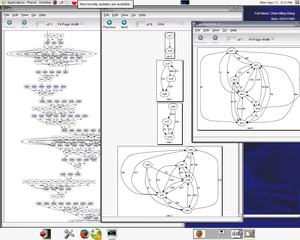| Summary Download Publication Contact |
Summary
top
Downloads
The version below contains source code in C++ and Python scripts for graph generation and transformation.
How to build CETA module, please see README.
-
Required environment of CETA
- Simics, a system level instruction set simulator. Register website: https://www.simics.net/
- Python. Official website: http://www.python.org/
- Graphviz. Website: http://www.graphviz.org/
- NetworkX. Website: https://networkx.lanl.gov/
-
CETA Source Code
-
Additional documentation
Please also see Ciprian Radu's documentation on installing CETA on Ubuntu.
-
Benchmark
The compressed tar file for CETA version 0.9 is available here. It contains source code, Python scripts, and README file.
ALPBench : http://rsim.cs.uiuc.edu/alp/alpbench/
more information about compiling and executing ALPBench benchmarks here.
top
Publications
- A.-H. Liu and R. P. Dick, “Automatic Run-Time Extraction of Communication Graphs From Multithreaded Applications,” Proc. Int. Conf. Hardware/Software Codesign and System Synthesis, Oct. 2006.
top


